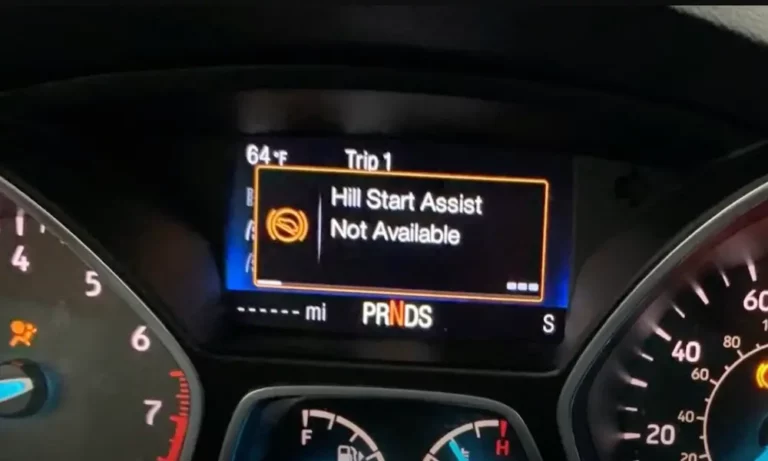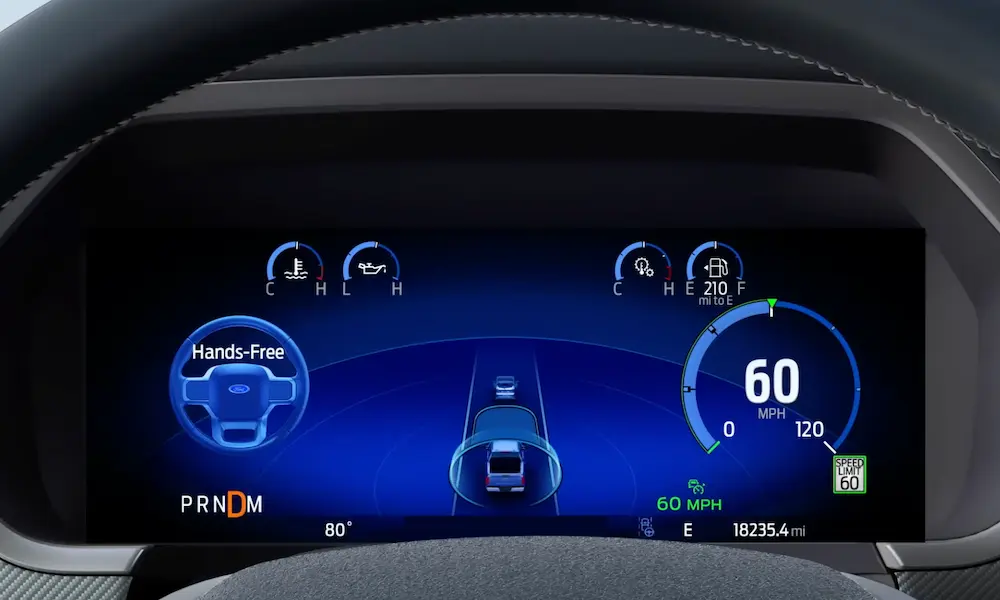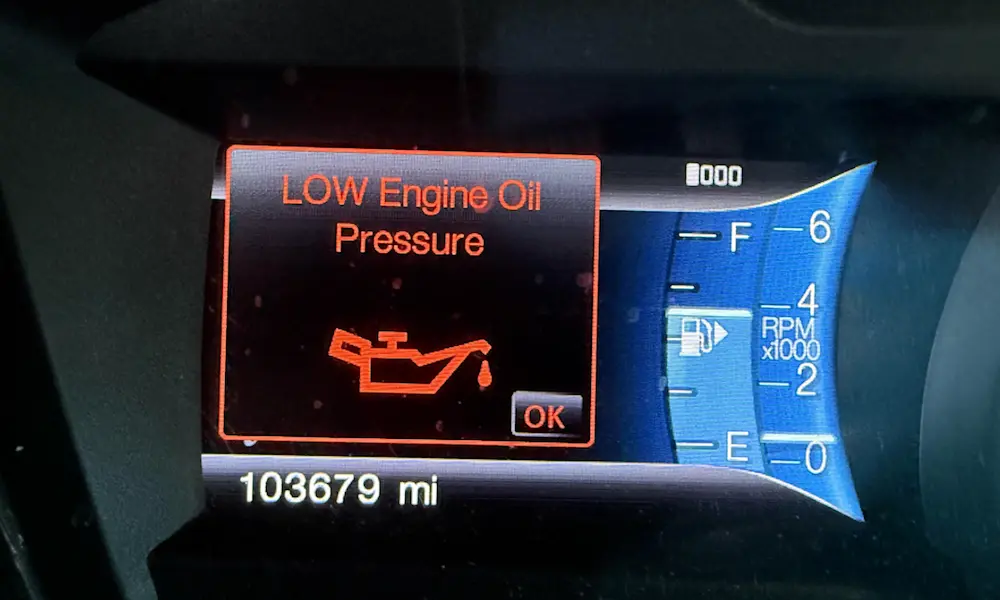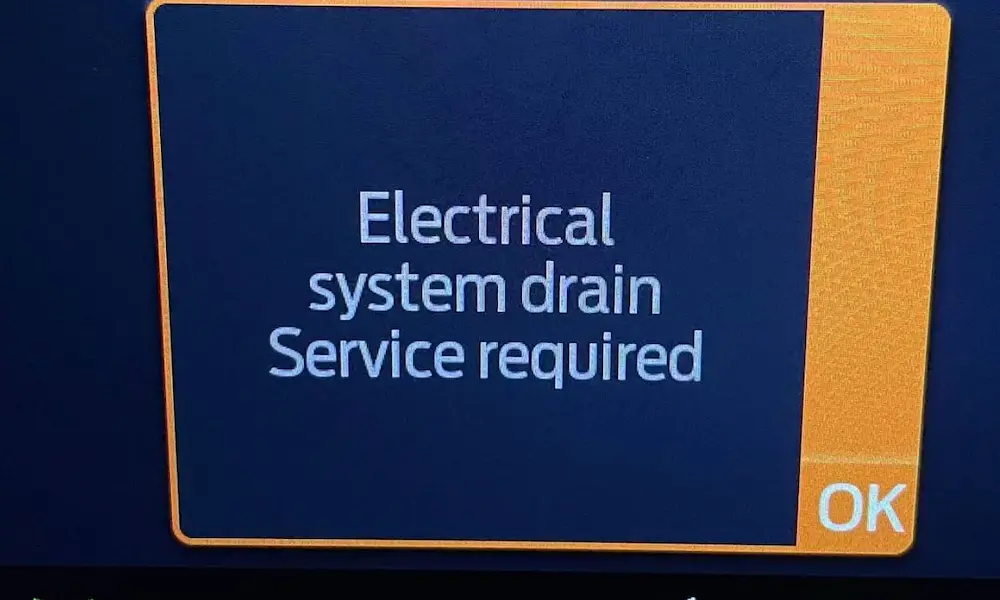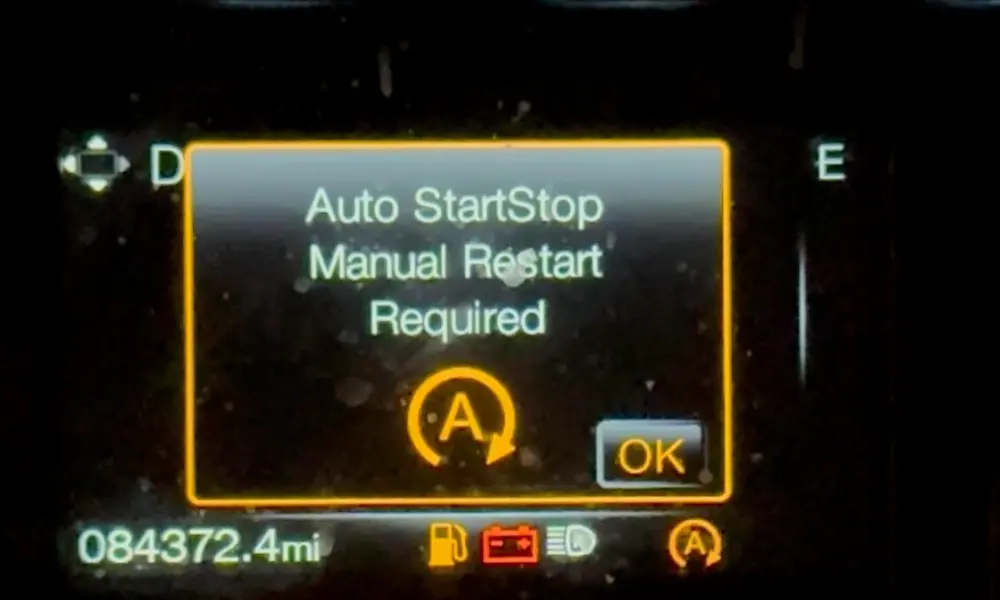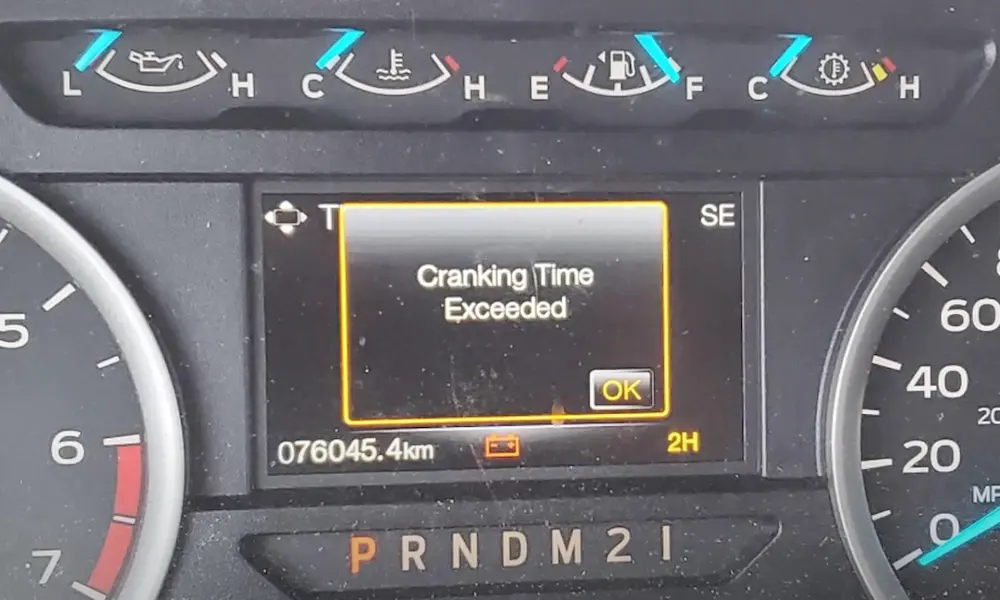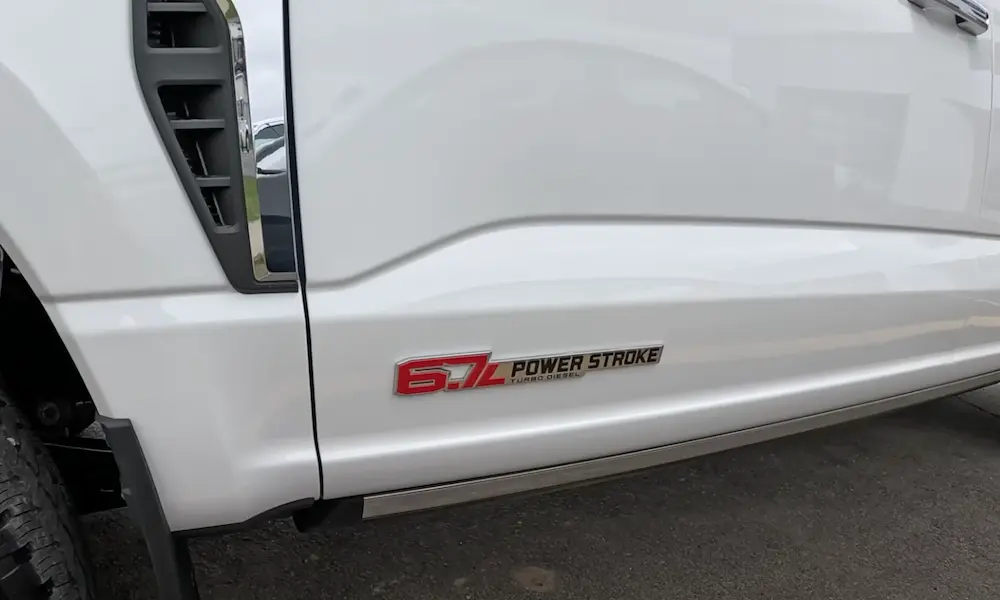Having your Ford display the “Hill Start Assist Not Available” message can be frustrating, especially when you’re parked on an incline. This feature prevents your vehicle from rolling backward while you transition from brake to gas pedal on hills. If you’re facing this issue, you’re dealing with a common problem affecting many Ford models, including the Focus, Escape, F-150, Explorer, and Fusion. Let’s dive into why this happens and how you can fix it.
What is Hill Start Assist and How Does It Work?
Hill Start Assist is a clever safety feature that temporarily maintains brake pressure when you’re on an incline. When you take your foot off the brake pedal, the system holds the brakes for about 2-3 seconds, giving you time to press the accelerator without rolling backward.
The system relies on several components working together:
- Electronic Stability Control (ESC) module
- Brake pressure sensors
- Wheel speed sensors
- Inclinometer
- Anti-lock Brake System (ABS) module
When you stop on a hill, these sensors detect your vehicle’s position and automatically activate the brake hold feature. The system releases when you apply enough throttle or after the preset time limit expires.
Common Causes of “Hill Start Assist Not Available”
ABS and Wheel Speed Sensor Problems
Wheel speed sensor issues account for 60-70% of Hill Start Assist failures. These sensors monitor each wheel’s rotation speed and send this data to the ABS module, which the Hill Start Assist system needs to function properly.
These sensors fail due to:
- Accumulated dirt and debris
- Damaged wiring harnesses
- Sensor corrosion
- Internal component failure
Front wheel sensors are particularly vulnerable to damage from road debris and moisture. When the cables connecting these sensors to the ABS module break internally due to steering movement, the system loses critical speed data, triggering the warning.
If your vehicle shows trouble codes in the C005X series or P0500, you’re likely dealing with wheel speed sensor problems.
Battery and Electrical System Issues
A weak battery or charging system problem is another major cause. The Hill Start Assist system needs stable 12-volt power to work correctly. When battery voltage drops below about 11.5 volts, the system may shut down.
You’ll often notice these problems:
- Intermittent warnings that disappear after driving
- Issues are worse in cold weather
- Problems appear when starting after the vehicle has been parked
A proper battery should read at least 12.6 volts when the engine is off and 13.7-14.2 volts while running. Even with a healthy battery, corroded terminals can create voltage drops, so cleaning them is an essential diagnostic step.
Brake System Failures
The brake light switch is a critical but often overlooked component. Located under the dashboard near the brake pedal, this switch signals when you press the brake pedal—information that’s essential for Hill Start Assist.
A faulty brake light switch can prevent the system from detecting brake pedal application, causing it to disable itself as a safety measure. Signs of this problem include:
- Non-functioning brake lights
- Inability to shift out of park
- Persistent HSA warning message
Low brake fluid levels or other brake system malfunctions can also trigger Hill Start Assist warnings, especially in Ford Edge models.
How to Diagnose Hill Start Assist Problems
Using OBD-II Scanning
Start with a comprehensive OBD-II scan using equipment that can read Ford-specific codes. Basic code readers from auto parts stores might miss critical ABS, stability control, and body control module codes that indicate the root cause.
Professional-grade scanners or Ford-specific diagnostic tools like FORScan can access all vehicle modules and display live data streams, revealing problems that don’t always set permanent codes.
Important codes to watch for include:
- P0500 (vehicle speed sensor)
- C005X series (wheel speed sensors)
- U-codes (communication problems between modules)
If scanning reveals no codes but warnings persist, you might be dealing with intermittent sensor problems or voltage-related faults that occur only under specific conditions.
System Reset and Calibration
Sometimes the issue can be resolved with a system reset or calibration. Simple reset procedures include:
- Disconnecting the battery for 15+ minutes to allow control modules to reset (though this erases radio presets and other settings)
- Using scan tools to target specific modules without affecting other systems
- For some Ford models, using specific button combinations or menu selections
Vehicles that have undergone accident repair or significant electrical work may need steering angle sensor calibration, as this sensor provides critical position data that both stability control and Hill Start Assist require.
DIY Repair Solutions
Replacing Wheel Speed Sensors
If you’re mechanically inclined, you can replace wheel speed sensors yourself:
- Parts cost $50-100 each
- Job takes 30-60 minutes per sensor
- Requires basic tools
- Sensors are usually accessible without removing wheels
- Remember to clean surrounding areas to prevent contamination
Fixing Brake Light Switch Issues
This is perhaps the most cost-effective repair:
- Switches cost $15-35
- Located under the dashboard near the brake pedal
- Accessible to most DIY mechanics
- Can be tested by checking brake light operation and using a multimeter to verify electrical continuity
Battery Maintenance
Battery problems are also DIY-friendly:
- Clean terminals and ensure secure connections
- Replace battery if needed ($80-150 depending on specifications)
- Installation takes 15-30 minutes
When You Need Professional Help
Some issues require professional service due to equipment and calibration requirements:
ABS Module Replacement
- Parts cost $300-600
- Labor adds another $150-300
- Requires programming and calibration using manufacturer-specific equipment
Wiring Harness Repair
- Challenging for DIY mechanics, especially when damage is in hard-to-access locations
- Professional diagnosis can quickly identify wiring problems using specialized test equipment
Software Updates
Ford dealerships have access to Technical Service Bulletins (TSBs) and software updates addressing known Hill Start Assist issues, particularly for newer vehicles still under warranty. Several Ford models have received specific software updates to address HSA functionality.
Model-Specific Issues
Ford Recalls and Service Actions
Ford has issued several recalls and Customer Satisfaction Programs addressing Hill Start Assist problems:
- 2019 Explorer: Customer Satisfaction Program 19B12 for ABS module software updates
- 2025 F-150: Power brake assist recalls that can affect Hill Start Assist operation
- Focus models with dual-clutch transmissions: Higher rates of Hill Start Assist problems related to transmission control module integration
Common Problems by Model
- Ford Fusion: Particularly sensitive to brake light switch failures affecting Hill Start Assist. The 2014-2018 model years show higher rates of steering angle sensor problems.
- F-150 trucks: Can experience problems related to transfer case position sensors or front hub engagement issues, especially in four-wheel-drive models.
- Explorer and Escape models: Electronic parking brake system malfunctions can disable Hill Start Assist functionality.
Preventing Hill Start Assist Problems
Regular Maintenance
- Test your battery and charging system yearly
- Clean battery terminals to prevent voltage drop issues
- Clean wheel speed sensors during brake service
- Inspect sensor wiring during routine maintenance
- Maintain proper brake fluid levels and condition
Proper System Usage
- Understand that the system activates automatically on grades exceeding 5-8 degrees
- Be aware that extreme cold can affect sensor accuracy and battery performance
- Allow your vehicle to warm up briefly before relying on Hill Start Assist in very cold weather
- Drive regularly on varied terrain to maintain proper calibration
- Avoid prolonged parking on extreme grades
When to Seek Professional Help
While many Hill Start Assist issues can be fixed at home, professional diagnosis is recommended when:
- DIY diagnostic efforts fail to identify clear causes
- Multiple symptoms occur simultaneously
- Warning lights persist after basic repairs
- You need programming or calibration after component replacement
Understanding the Safety Implications
While your vehicle remains driveable with disabled Hill Start Assist, you’ll need to use extra caution when starting on inclines to prevent rollback. This is particularly important for drivers who aren’t familiar with manual hill start techniques.
The interconnected nature of modern vehicle systems means that apparently simple problems can have complex underlying causes. Starting with basic electrical system checks, particularly battery voltage and connection integrity, can resolve many issues without expensive component replacement.
Regular maintenance of supporting systems significantly reduces the likelihood of Hill Start Assist problems, ensuring both proper repair and continued vehicle safety.

